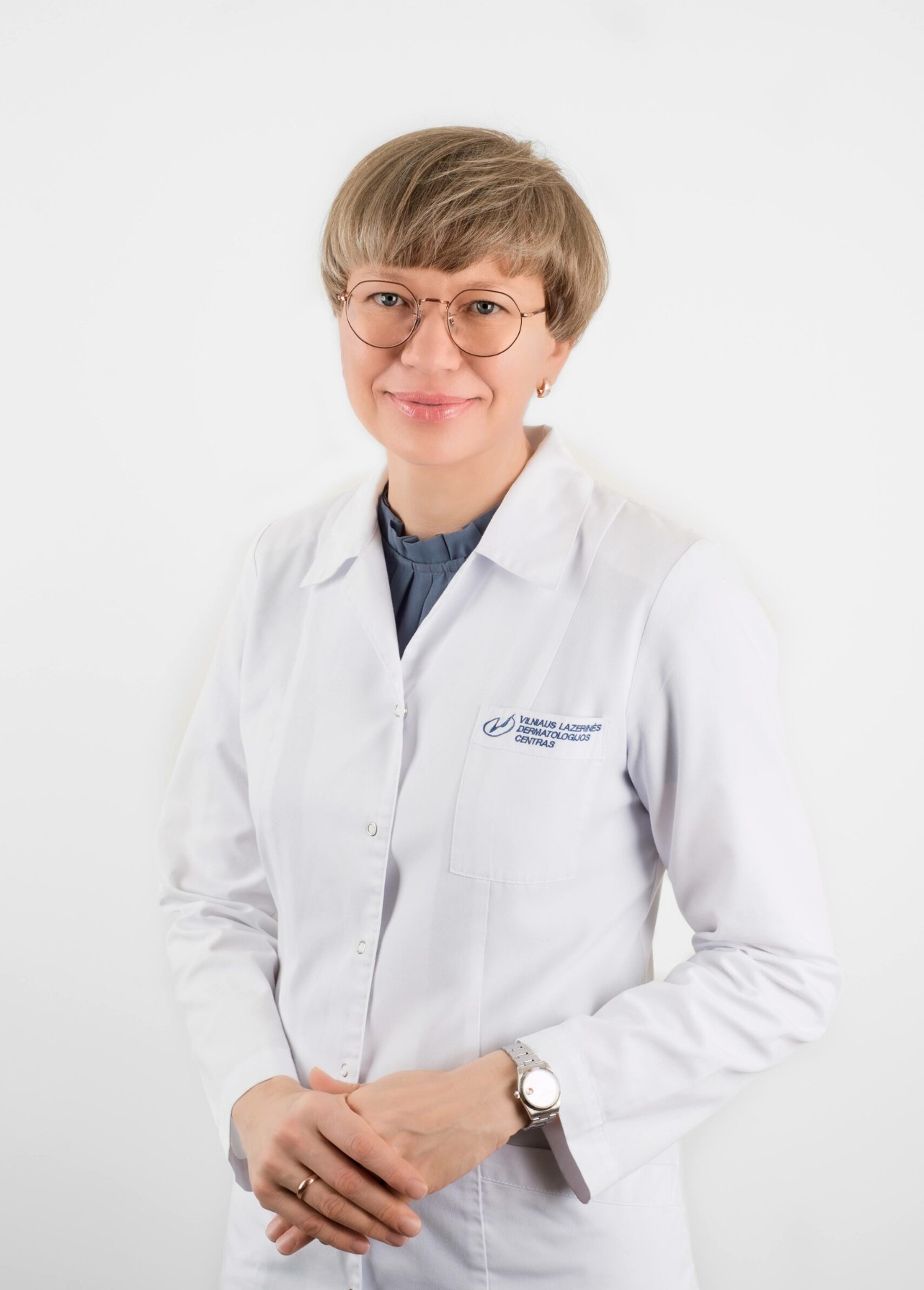Papillomas are skin growths that appear as small flesh-coloured growths on the ‘leg’. Papillomas affect around 50% of people and the risk increases with age. Obese people and people with diabetes have been found to have a higher incidence of papillomas. These skin lesions are most often located in areas of the body that are rubbed – armpits, neck, under the breasts and groin. Usually there are no additional symptoms unless the papilloma is traumatised or the “little leg” is twisted.
Dermatofibroma – a benign lesion of the skin and soft tissues that can occur after an insect bite or trauma, but usually develops for no apparent reason. It is a stiff, hyperpigmented nodule up to 1 cm in diameter. In most cases they appear on the legs. They may occasionally itch.
Seborrhoeic keratoses – often benign skin lesions due to the proliferation of immature keratinocytes. They occur most often in people over 50 years of age, but are sometimes found in younger patients. A genetic predisposition to multiple seborrhoeic keratoses has been identified. The most important factor in the development of these lesions is excessive exposure to sunlight. Seborrhoeic keratoses appear as a clear-cut, round or oval lesion with a rough surface. It is not usually symptomatic, but persistent traumatisation may result in itching, pain or bleeding.
Miliums are small cysts filled with keratin. These are hard papules, 1 to 2 mm in diameter, usually occurring on the face. They can sometimes form after burns, blistering diseases, dermabrasion. It is also a side effect of some medicines. However, in most cases, miliums are formed for no apparent reason. They are treated with topical retinoids or mechanical removal.
Epidermal (epidermoid) cyst – the most common skin cysts. They can occur anywhere on the body. An epidermoid cyst appears as a deeper flesh-coloured nodule, often with a central pore in the middle. Sometimes there are more pores. The size varies from a few millimetres to several centimetres. When an infection occurs, the cysts enlarge, become red and painful. Sometimes these cysts appear after trauma, comedones. In some cases, they gradually enlarge, in others they remain stable. Spontaneous rupture and inflammation may occur, damaging the adjacent tissues. Uninfected cysts may disappear spontaneously but tend to recur.
Cherry angioma – a benign mass of vascular origin. It is a proliferation of mature capillaries, most common in adults. Multiple angiomas are most commonly observed in the trunk. These lesions are small, up to 0.4 cm in diameter, dome-shaped, cherry-coloured, and pale when pressed. More and more angiomas are appearing over the years and unfortunately there is no method to stop the appearance of new angiomas.
Piogenic granuloma is another benign vascular neoplasm, otherwise known as lobular capillary haemangioma. This neoplasm can occur on both the skin and mucous membranes. Piogenic granuloma is characterised by rapid growth, a fragile surface structure and bleeding at the slightest trauma.
Lipoma is the most common benign soft tissue tumour. It consists of mature fat cells surrounded by a connective tissue capsule. Lipomas can occur anywhere in the body. They are soft, painless subcutaneous nodules ranging in size from 1 to 10 cm. They are most common on the trunk and arms. The oval or round shape is detected by auscultation. Often the patient has more than 1 lipoma.
Pressure sores – a thickening of the outer layer of the skin caused by persistent pressure and friction. Often causes pain and other discomfort, makes it difficult for patients to walk, remind the leg. Sometimes the sores can visually resemble warts. Prevention is an essential method of treating pressure sores.






